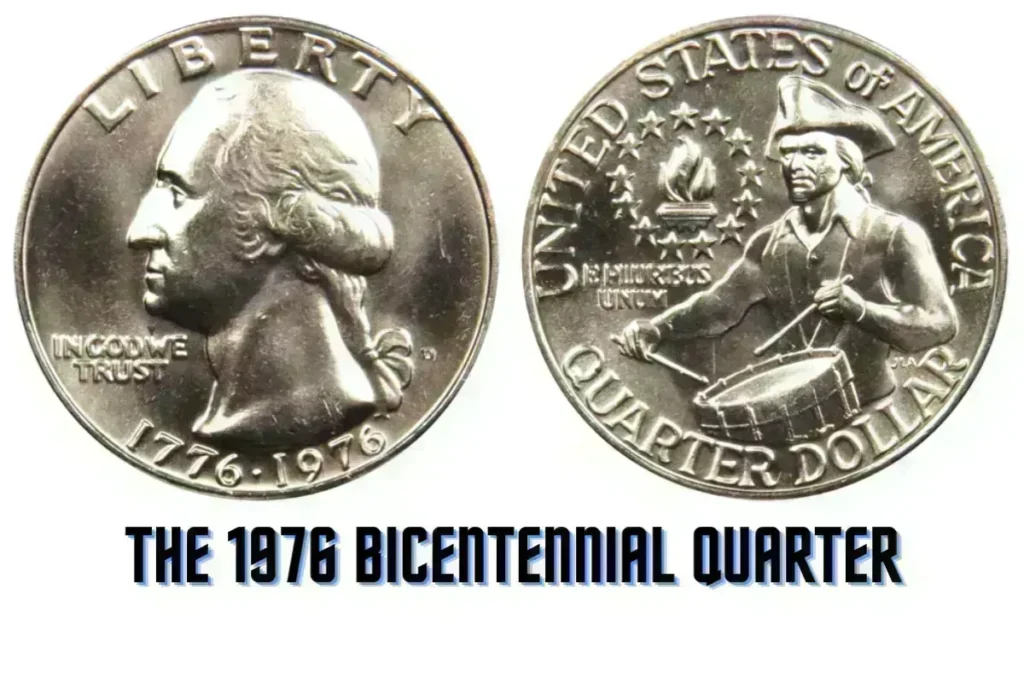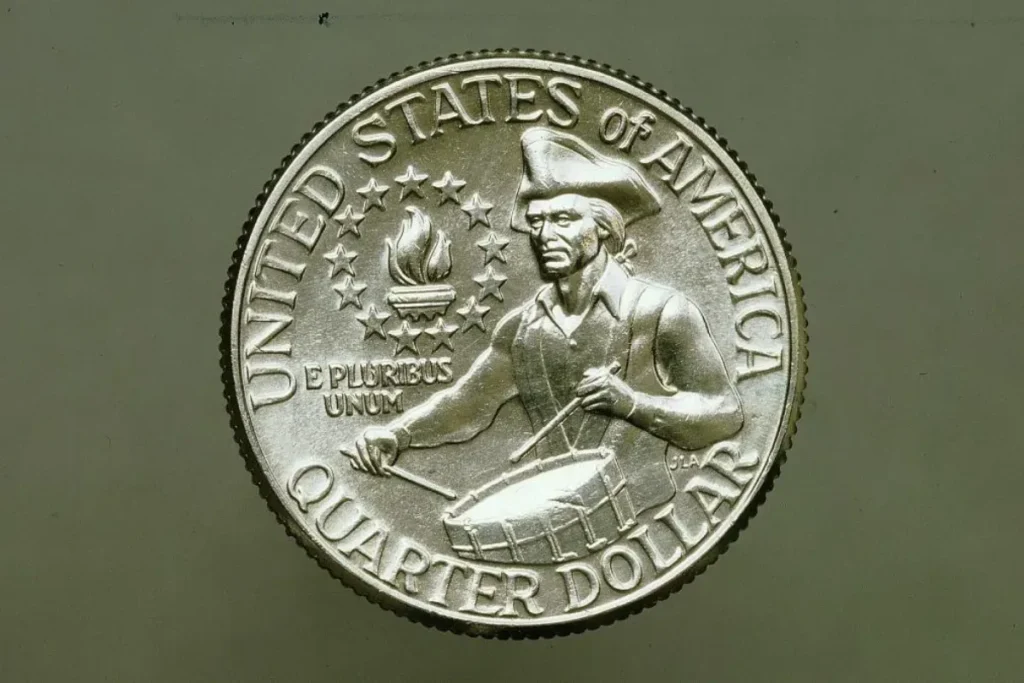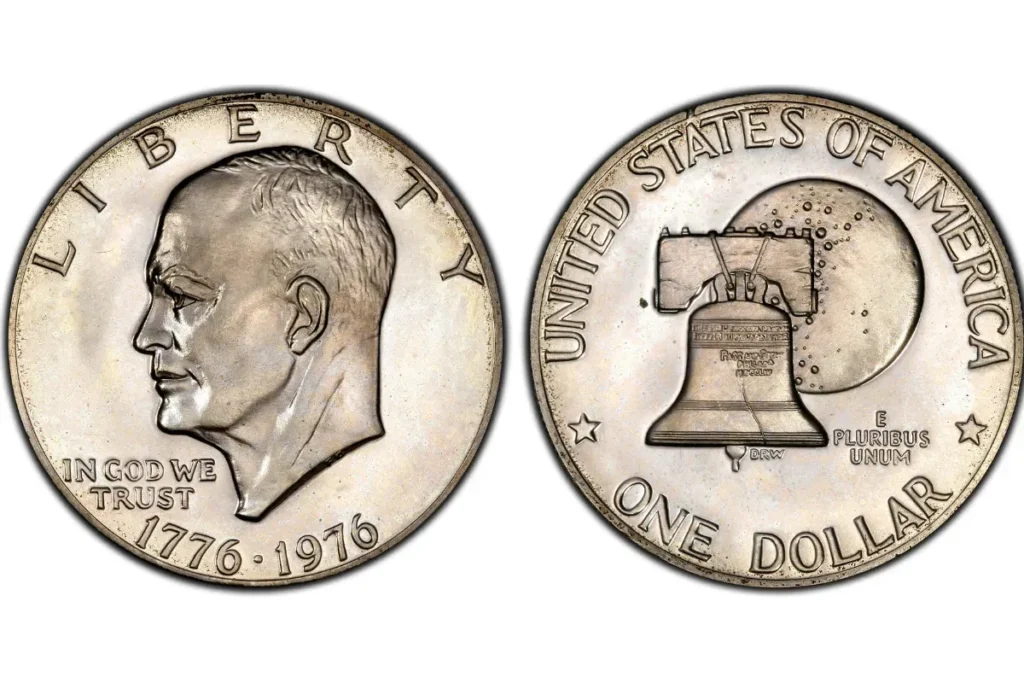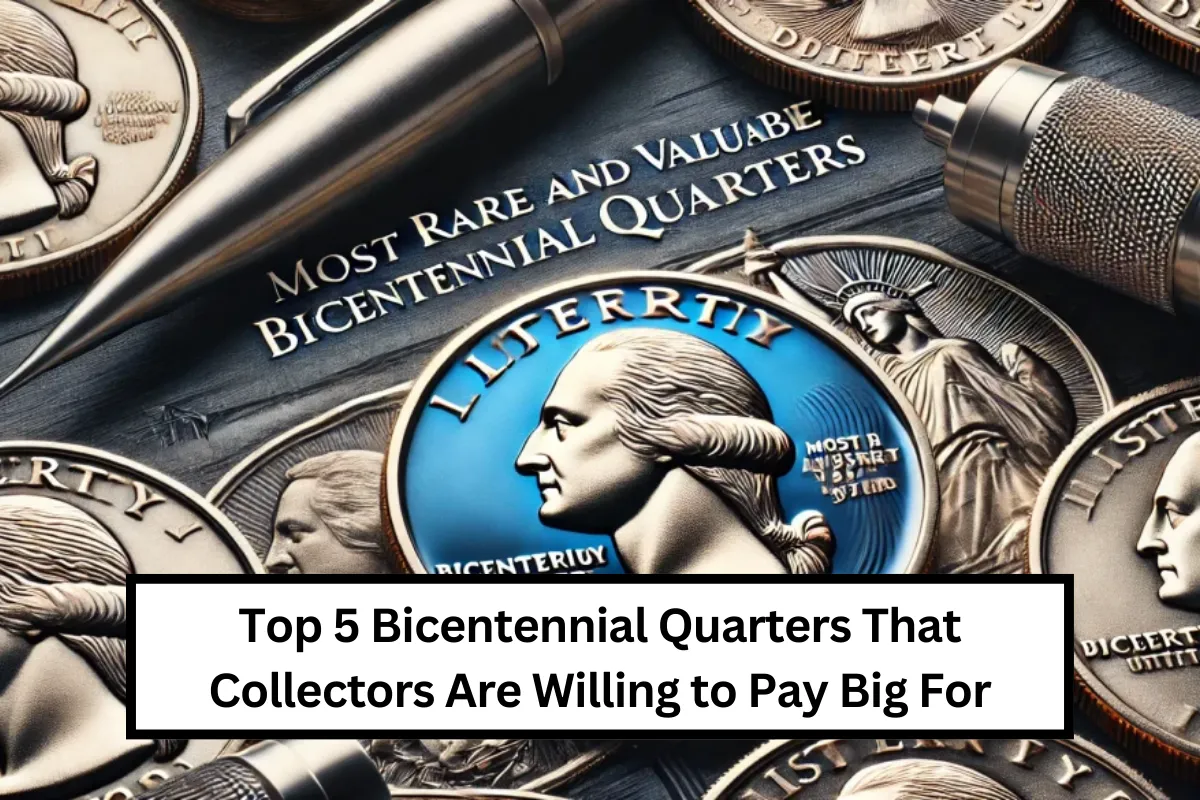In 1976, the United States celebrated its 200th anniversary of independence with special Bicentennial quarters.
While most of these quarters are still in use today and worth just 25 cents, some are highly prized by collectors for their rarity and unique features.
Here’s a look at the five most valuable and rare Bicentennial quarters and why they are so special.
1. 1976-S Silver Proof Bicentennial Quarter

Estimated Value: Up to $19,200
Details: This quarter, minted in San Francisco, has a 40% silver composition, making it much more valuable than the usual copper-nickel quarters. It was produced specifically for collectors and has a shiny, mirror-like finish due to the proof minting process.
Reason for Value: The high silver content and the proof quality make this quarter very valuable. If it’s in mint condition or still in its original packaging, it can fetch a premium price.
2. 1976-D Doubled Die Obverse Bicentennial Quarter
Estimated Value: Up to $8,400
Details: This quarter features a minting error known as the doubled die obverse. This means that parts of the design, such as the date or inscriptions, appear twice because of a misalignment during the minting process.
Reason for Value: Errors like the doubled die are rare and sought after by collectors. Quarters with this mistake, especially in high grades, can be worth thousands at auction.
3. 1976-S Deep Cameo Proof Bicentennial Quarter

Estimated Value: $2,760
Details: The deep cameo proof quarter is produced with extra care, resulting in a strong contrast between the raised design and the background. This effect is even more pronounced in deep cameo proofs.
Reason for Value: The deep cameo finish and, in some cases, silver content increase its value. Coins in the highest grades are especially valuable.
4. 1976-S Silver Clad Bicentennial Quarter
Estimated Value: $13,500
Details: This quarter was minted in San Francisco and contains a 40% silver-copper blend. It is part of a special series different from the standard Bicentennial quarters.
Reason for Value: The limited number of these quarters and their silver content make them highly collectible. High-grade coins (MS69 or better) can command impressive prices.
5. 1976-D Clad Bicentennial Quarter (MS68)

Estimated Value: $6,462.50
Details: Although this is a standard copper-nickel quarter minted in Denver, its value comes from its exceptional condition, rated as MS68. Few coins from circulation maintain such high-quality grades.
Reason for Value: In coin collecting, condition is crucial. An MS68 grade means the coin is nearly flawless, making this one of the most valuable non-silver Bicentennial quarters.
Coin Comparison
| Coin Type | Composition | Mint Mark | Grade (Highest Sold) | Estimated Value |
|---|---|---|---|---|
| 1976-S Silver Proof Bicentennial Quarter | 40% Silver | San Francisco (S) | PR69 | $19,200 |
| 1976-D Doubled Die Obverse Bicentennial Quarter | Copper-Nickel | Denver (D) | MS66 | $8,400 |
| 1976-S Deep Cameo Proof Bicentennial Quarter | Copper-Nickel | San Francisco (S) | PR69 | $2,760 |
| 1976-S Silver Clad Bicentennial Quarter | 40% Silver | San Francisco (S) | MS69 | $13,500 |
| 1976-D Clad Bicentennial Quarter (MS68) | Copper-Nickel | Denver (D) | MS68 | $6,462.50 |
The 1776-1976 Bicentennial quarters offer a fascinating glimpse into U.S. history and coinage.
While most are worth just their face value, the rare ones can be quite valuable due to their unique features,
minting errors, or special compositions. Collectors seek out these quarters for their historical significance and potential worth.
Why are some Bicentennial quarters worth more than face value?
Some Bicentennial quarters are worth more due to rare features like minting errors, special silver content, or unique minting processes.
What makes the 1976-S Silver Proof Bicentennial Quarter so valuable?
This quarter is valuable because it contains 40% silver and was minted with a special proof finish, making it more attractive to collectors.
How can I tell if my Bicentennial quarter has a minting error?
Look for design details that are duplicated or misaligned. Errors like the doubled die obverse are noticeable because parts of the design appear twice.
What is the difference between a standard and a silver-clad Bicentennial quarter?
A silver-clad quarter contains 40% silver and was minted in San Francisco, while standard quarters are made of copper-nickel and were minted in Denver and Philadelphia.
How can I determine the value of my Bicentennial quarter?
The value depends on factors like the coin’s condition, rarity, and specific features. Coins in higher grades and with unique characteristics usually have higher values.










